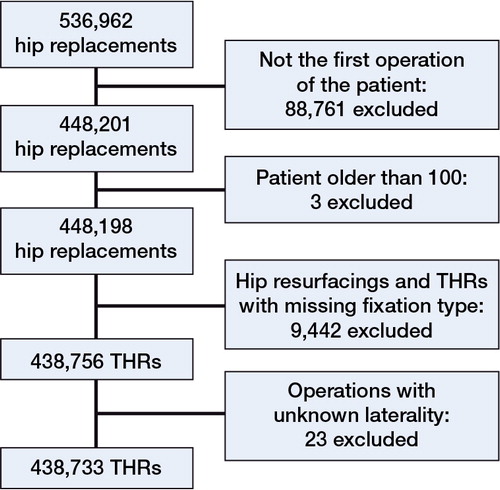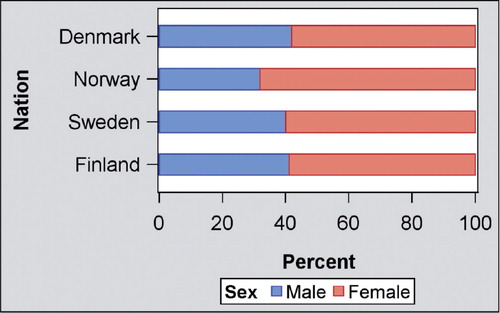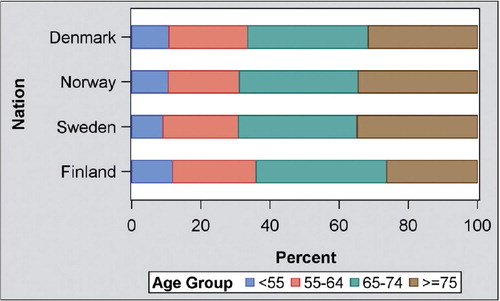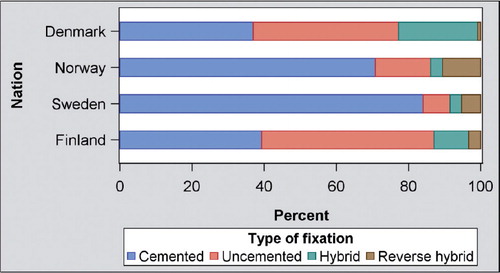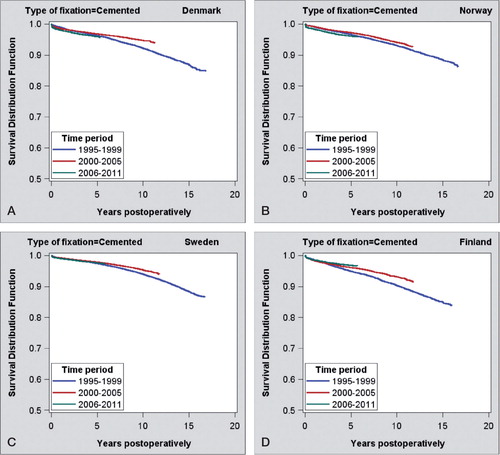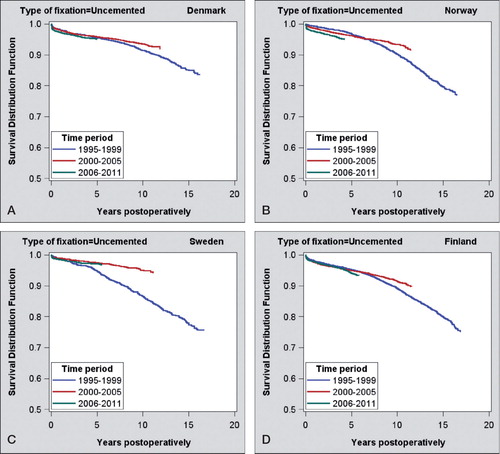Figures & data
Table 1. Demographic data, and data concerning fixation technique, surgical approach, cause of revision, and procedure performed at revision for each country
Table 2. Kaplan-Meier 10- and 15-year survival data with 95% CI for all THRs, cemented THR, uncemented THR, hybrid THR, and reverse hybrid THR by country. The 7.3-year survival of reverse hybrid THR in Denmark was 92.8% (95% CI: 90.3–94.7)
Figure 5. Kaplan-Meier survival for all total hip replacements in the NARA database (by country), with any reason for revision as endpoint.

Figure 6. Kaplan-Meier survival for cemented total hip replacement in the NARA database (by country), with any reason for revision as endpoint.
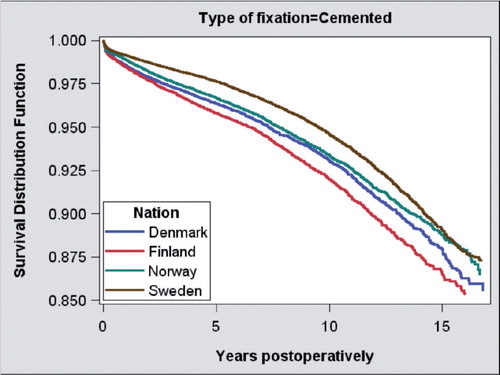
Figure 7. Kaplan-Meier survival for uncemented total hip replacement in the NARA database (by country), with any reason for revision as endpoint.
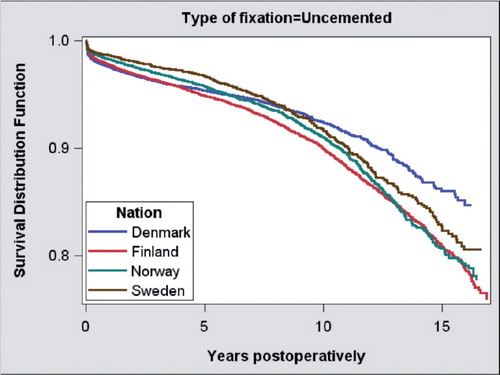
Figure 8. Kaplan-Meier survival for hybrid total hip replacement (cemented cup, cementless stem) in the NARA database, by country, with any reason for revision as endpoint.
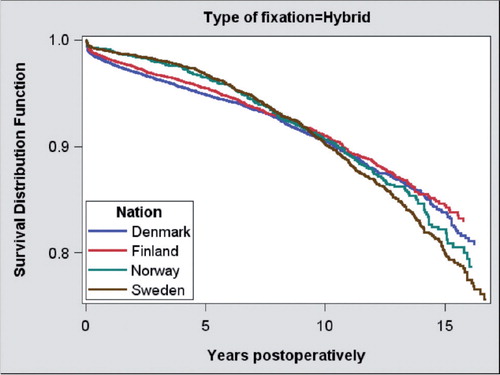
Figure 9. Kaplan-Meier survival for reverse hybrid total hip replacement (uncemented cup, cemented stem) in the NARA database, by country, with any reason for revision as endpoint.
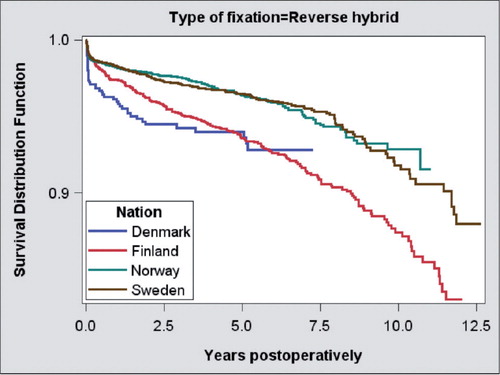
Table 3. Kaplan-Meier 10- and 15-year survival data with 95% confidence intervals from subgroup analyses performed separately for female and male patients aged < 60 years and ≥ 60 years and for cemented and uncemented THR, by country. The 9.7-year survival of uncemented THR in Sweden for female patients aged ≥ 60 years was 91.4% (95% CI: 86.5–94.5)
Figure 10. Countrywise hazard ratio (HR) for risk of revision of all THRs compared to the reference country, Sweden (HR = 1). HRs are presented in 1-year time periods, except that the first year has been divided into 2 periods. If there were less than 20 cases in the group, the HRs were not included in the graphs due to the intervals being too wide. The model was stratified by sex, age group, and diagnosis.
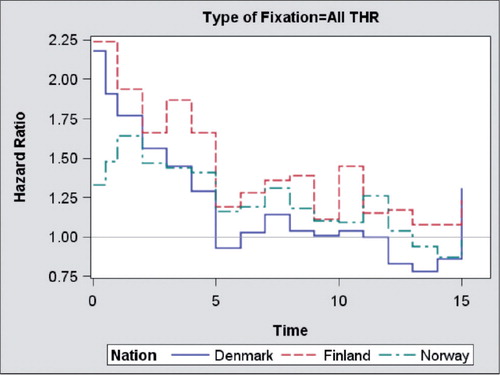
Figure 11. Countrywise hazard ratio (HR) for risk of revision of cemented THA compared to the reference country, Sweden (HR = 1). HRs are presented in 1-year time periods, except that the first year has been divided into 2 periods. If there were less than 20 cases in the group, the HRs were not included in the graphs due to the intervals being too wide. The model was stratified by sex, age group, and diagnosis.
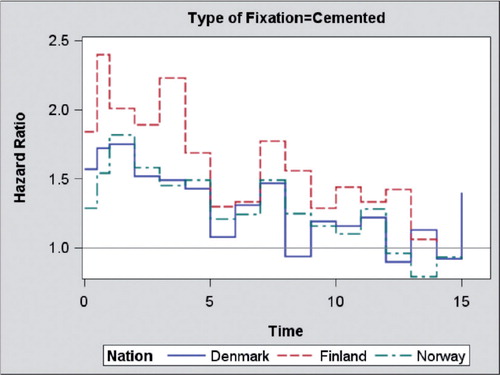
Figure 12. Countrywise hazard ratio (HR) for risk of revision of uncemented THA compared to the reference country, Sweden (HR = 1). HRs are presented in 1-year time periods, except that the first year has been divided into 2 periods. If there were less than 20 cases in the group, the HRs were not included in the graphs due to the intervals being too wide. The model was stratified by sex, age group, and diagnosis.


